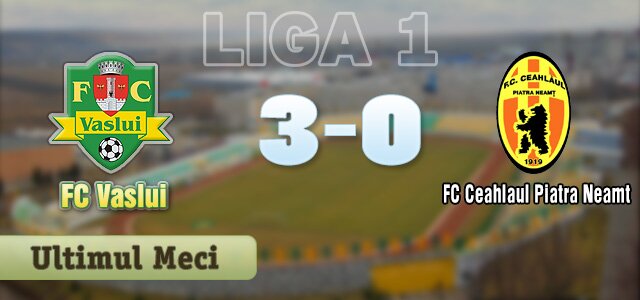What Is A Sweeper-Keeper? Skills And Drills
If you're curious about how today's goalkeepers double as defenders and sometimes even playmakers, you'll want to know what makes a sweeper-keeper stand out. This role calls for way more than just good hands; you'll need sharp decision-making, confidence on the ball, and clear communication. But stepping outside the box—literally—brings challenges and risks that not every keeper is ready for. So, how do you truly master this demanding position?
Defining the Sweeper Keeper Role
Modern football requires goalkeepers to take on roles beyond traditional shot-stopping, leading to the emergence of the sweeper keeper. This position involves engaging actively in defensive plays—often stepping outside the penalty area to intercept through balls and initiate counter-attacks.
A sweeper keeper is expected to demonstrate a range of skills that extend past basic goalkeeping. This includes proficiency in distributing the ball effectively and maintaining possession while under pressure.
As tactical approaches evolve, teams increasingly rely on the sweeper keeper to support a higher defensive line, facilitating more aggressive pressing strategies. Quick decision-making is essential for success in this role.
A sweeper keeper must effectively read game situations and coordinate with defenders, ensuring cohesive defensive actions. The integration of technique, tactical awareness, and proactive involvement characterizes the transformation of the goalkeeper position in contemporary football.
Core Attributes and Skills for Sweeper Keepers
The role of a sweeper keeper is characterized by specific responsibilities that extend beyond traditional goalkeeping. This position requires a goalkeeper to possess advanced ball control, enabling effective management of passes received under pressure. Such capability aids in the distribution of the ball and supports the build-up play for the team.
Moreover, decision-making in this role must be both quick and accurate, especially when it comes to intercepting through balls or initiating counter-attacks. The ability to read the game enhances a goalkeeper's tactical awareness, which in turn allows for improved positioning and support to the defensive structure.
Furthermore, effective communication is a critical element of the sweeper keeper's function. Providing clear and consistent instructions can help organize the defensive line, minimizing confusion during dynamic situations such as fast breaks or set-pieces. This aspect reinforces the goalkeeper's role as the final line of defense, impacting overall team organization and defensive efficacy.
Key Advantages of Playing as a Sweeper Keeper
Playing as a sweeper keeper offers strategic advantages that can significantly influence a team's defensive and offensive structure. Sweeper keepers are skilled at analyzing game situations, allowing them to intervene outside the traditional goalkeeping role. They're effective at intercepting through balls, preventing attackers from capitalizing on scoring opportunities.
Additionally, these players excel in ball distribution, which is critical for maintaining possession and facilitating build-up play. Their ability to accurately distribute the ball can lead to quicker attacks and more cohesive team movement.
The presence of a sweeper keeper allows defenders to advance further up the pitch, as they trust that the keeper will support the defense and manage potential counter-attacks. This proactive role also provides an additional passing option, which can enhance a team's overall tactical flexibility.
Ultimately, the use of a sweeper keeper contributes to a more integrated approach to both defense and attack, reinforcing a team's tactical framework.
Common Risks and Challenges Faced
Playing as a sweeper keeper offers tactical versatility but also presents significant risks and challenges that require constant awareness and sound decision-making. One primary concern is the timing of actions when rushing out to intercept the ball; even a minor miscalculation can leave the goal unprotected.
Due to their high positioning on the pitch, sweeper keepers are particularly susceptible to counter-attacks, as attackers can exploit the space left behind.
Furthermore, decision-making regarding passing is critical; inaccurate passes can lead to turnovers that may place the team in precarious situations. Under pressure, maintaining composure becomes essential, as any errors could potentially have a significant impact on the outcome of the match.
Communication with defenders is another crucial aspect; ineffective or erratic communication can result in confusion, uncoordinated plays, and an increased likelihood of conceding goals.
Positioning and Movement Beyond the Box
As the final line of defense and an additional player in the outfield, a sweeper keeper must excel in precise positioning and dynamic movement that extends beyond the penalty area.
It's important for the goalkeeper to position themselves just behind the defensive line, facilitating interception of through balls in high pressing scenarios. Quick, agile movement enables the keeper to read the flow of the game, assess when to clear the ball, and offer support to defenders.
Effective communication with defenders is crucial; the sweeper keeper must direct their positioning and coordinate shifts in defensive alignment.
Decision-making is a critical aspect of this role; the goalkeeper must discern the appropriate moments to challenge attacking players or retreat to goal. Engaging in regular practice to refine these skills is essential, as it minimizes the risk of being caught out of position during a match.
Essential Ball Control and Distribution Drills
To enhance your effectiveness as a sweeper keeper, it's essential to develop ball control and distribution skills. Engaging in cone dribbling drills can improve maneuverability and possession, particularly under pressure from attackers.
Incorporating short passing exercises with defenders can help refine passing accuracy and promote fluid distribution during build-up play. Additionally, practicing long-range passes is beneficial for initiating attacks and quickly reaching outfield players.
One-on-one drills with attackers are crucial for sharpening decision-making skills and defensive capabilities outside the box. Moreover, participating in small-sided games that emphasize playing out from the back is beneficial for gaining confidence in directing distribution and maintaining team possession.
These methods collectively contribute to a goalkeeper's all-around effectiveness in their role as a sweeper keeper.
Tactical Awareness and Decision-Making Exercises
Playing as a sweeper-keeper involves responsibilities that extend beyond shot-stopping abilities. It requires a high level of tactical awareness and decisive decision-making. To enhance these skills, engaging in simulation drills that replicate high-pressure situations is essential. For instance, practicing how to anticipate through balls or respond effectively to one-on-one confrontations can significantly improve a goalkeeper's performance.
Additionally, incorporating passing drills that involve pressure can facilitate quicker decision-making regarding whether to execute long or short passes. This not only sharpens distribution skills but also prepares the player to act swiftly during matches.
Furthermore, scenarios that emphasize advanced communication and timely defensive actions are crucial. They help ensure that the goalkeeper maintains an acute awareness of potential threats from opponents.
Lastly, regular video analysis serves as a valuable tool for understanding various tactical formations and strategies, allowing players to make informed decisions during actual gameplay. This analytical approach can lead to improved performance in critical match situations.
Communication and Coordination With Defenders
Effective tactical awareness in soccer relies heavily on clear communication between the sweeper-keeper and the defensive line. As a sweeper-keeper, establishing a strong vocal presence on the field is essential. Issuing clear instructions to defenders helps maintain coordination and understanding of roles and positioning.
Consistent communication fosters trust within the team. It's important to implement both verbal cues and hand signals to facilitate quick tactical adjustments, especially during dynamic play. This approach is critical in reducing confusion among defenders, ensuring better organization in the defense, and allowing for timely reactions during crucial situations, such as set pieces, counterattacks, and shifts in the defensive line.
Physical and Mental Training Strategies
Training as a sweeper-keeper requires a balanced emphasis on both physical and mental skills to perform effectively in this complex role. Agility drills are integral to enhancing lateral movement and speed, enabling swift positioning to confront attacking players.
Additionally, exercises focused on ball control can significantly aid in developing technical proficiency, which is essential for effective distribution and maintaining possession under pressure.
To optimize overall performance during matches, it's beneficial to improve cardiovascular endurance through targeted interval training. This form of training helps sustain energy levels during the physically demanding phases of a game.
Incorporating situational drills is also important, as they foster improved decision-making abilities and enhance the capacity to anticipate game developments.
Moreover, effective communication and defending organization are critical components to a sweeper-keeper's success. Consistently simulating real-game scenarios with the defensive line can help solidify these concepts, enabling players to coordinate more effectively during actual matches.
Such structured training strategies are essential for the development of a competent and responsive sweeper-keeper.
Profiles of Leading Sweeper Keepers in Modern Football
The role of the sweeper-keeper has evolved significantly in recent years, with today's leading practitioners redefining the responsibilities associated with guarding the goal. Manuel Neuer exemplifies the classic sweeper-keeper, demonstrating exceptional skills in game reading, aerial control, and the ability to initiate attacks through precise distribution. His contributions extend beyond traditional goalkeeping, as he often participates in building play from the back.
Ederson, on the other hand, integrates ball-playing capabilities with an offensive mindset, effectively functioning as an additional outfield player. His passing ability not only aids in launching attacks but also reinforces modern tactical approaches that prioritize ball retention and positional play.
Alisson Becker is known for his quick shot-stopping ability, which is crucial in high-pressure situations. However, his decision-making in these contexts underscores the inherent risks associated with the contemporary sweeper-keeper role. The importance of rapid and accurate judgments under pressure continues to be pivotal in modern football.
These goalkeepers, along with those who've historically contributed to the evolution of this position, have influenced perceptions of leadership, anticipation, and creativity within goalkeeping. Their impact has prompted a reevaluation of the attributes necessary for success in the modern game.
Conclusion
As a sweeper keeper, you’re not just a shot-stopper—you shape the entire game. When you master ball control, decision-making, and communication, you become a dynamic force who drives your team forward and keeps danger at bay. Embrace the drills and refine your tactical understanding to elevate both your play and your team’s success. Commit to continuous improvement, and you’ll thrive in this demanding, exciting, and influential modern football role.







.jpeg)
.jpeg)
.jpeg)
.jpeg)
 Fii suporter adevarat. Personalizeaza-ti monitorul in stilul FC Vaslui.
Fii suporter adevarat. Personalizeaza-ti monitorul in stilul FC Vaslui.
